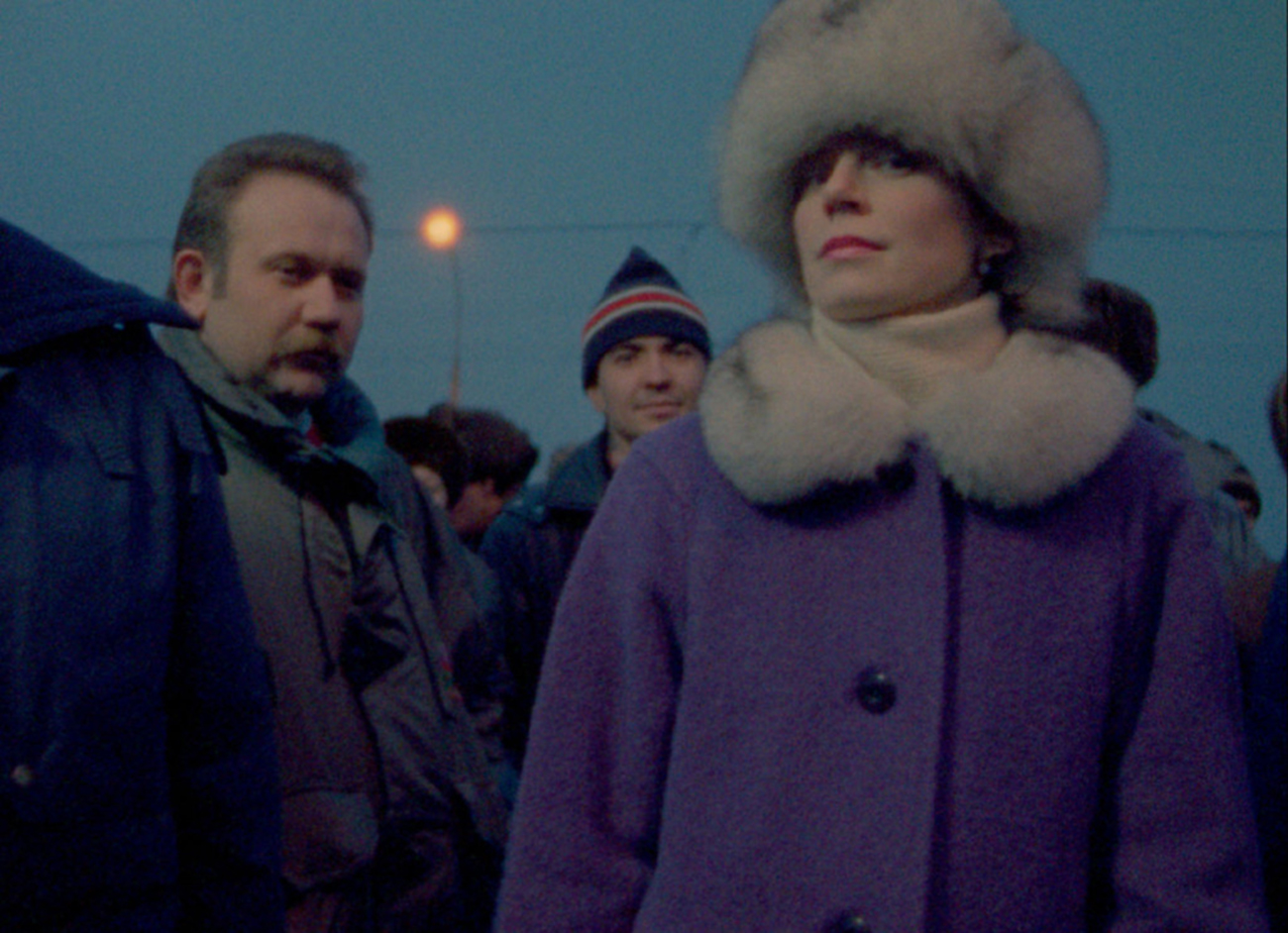Tussen 1991 en 1993, vlak na de val van de Berlijnse Muur, reisde Chantal Akerman door Midden- en Oost-Europa – naar Oost-Duitsland in de lente, naar Polen en Oekraïne in de zomer, en verder naar Moskou in de winter. “Ik wilde al twintig jaar naar Oost-Europa gaan,” aldus Akerman, “om er te werken met Slavische talen, die verschillend zijn maar vrij gelijkaardig klinken. Ik wilde een werk maken over veranderingen in stemmen en talen.” De film ontwikkelde zich echter, op de tast, tot een totaal andere vorm: terwijl de textuur van de klankband heel belangrijk is in D’Est, komt er geen enkel woord in voor. In de plaats ontvouwt zich een audiovisuele compositie van beklemmende impressies, zonder commentaar, dialoog of ondertitels. In lange takes onthult zich een wereld in suspensie, op de rand van een onbestemde toekomst. “Zonder te sentimenteel te doen zou ik zeggen dat er nog gezichten zijn die zich geven en bij momenten het gevoel van verlies doen vergeten, mensen op de rand van de afgrond die je van tijd tot tijd aangrijpen terwijl je het Oostblok doorkruist zoals ik net heb gedaan.”
“I originally wanted to work with a lot of languages. I had a lot of preconceived ideas, but it was through traveling a lot in those countries and finding things that interested me both in an emotional way and in a cinematic way that the film took shape. We made four trips. We were shooting a bit, but I knew the film was not there yet. So through the traveling I saw these people waiting and waiting and I thought that I should install myself next to them and that would be the film. So the shape was in my mind, but it was still very loose. And then I shot the material and through the editing I started to find the shape. I started to swim. And, in a way, that’s much more interesting than to just follow a story. It’s through cinema that you find the cinema.”
Newly digitized and restored by CINEMATEK
